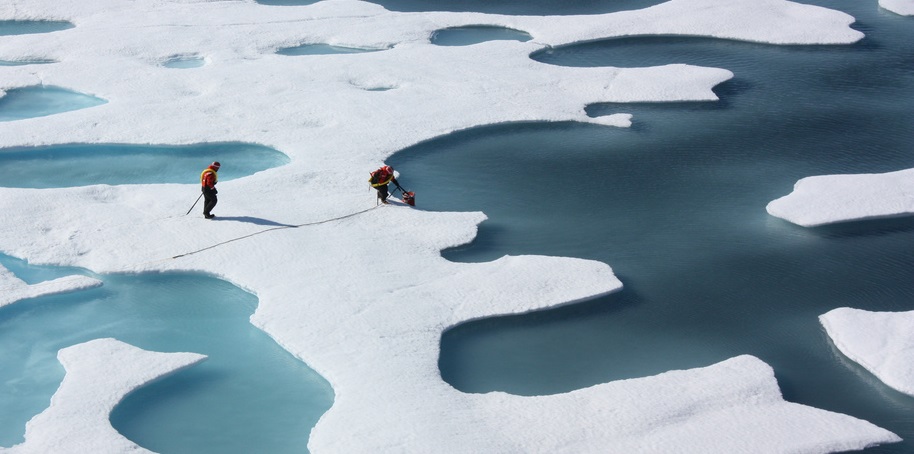Promising more accurate predictions in an era of rapid climate change, a new tool is harnessing deep learning to help better forecast Arctic sea ice conditions months into the future.
As described in a paper published in the science journal Nature Communications Thursday, the new AI tool, dubbed IceNet, could lead to improved early-warning systems to protect Arctic wildlife and coastal communities.
Created by an international team of researchers led by the British Antarctic Survey and the Alan Turing Institute, IceNet tackles a challenge that has long vexed scientists. “The Arctic is a region on the frontline of climate change and has seen substantial warming over the last 40 years,” explained lead author Tom Andersson, a data scientist at the BAS AI Lab, in a statement.
“IceNet has the potential to fill an urgent gap in forecasting sea ice for Arctic sustainability efforts and runs thousands of times faster than traditional methods,” he added.
Because it forms on the surface of the water — where its formation is influenced by both the air above and the ocean below, sea ice is hard to forecast.
But the amount of sea ice that forms each year is falling fast.
Due to rising temperatures, the extent of Arctic sea in September 2020 was half what it was in 1979, when satellite measurements of the region began.
That represents the loss of an area almost 15 times the size of California.
These changes have big consequences for the climate, Arctic ecosystems and the people who live in the region, the paper’s authors note.
IceNet, the AI predictive tool, is almost 95 percent accurate in predicting whether sea ice will be present two months ahead, the paper’s authors report.
That’s a big improvement over the leading physics-based model.
Unlike forecasting systems that try to directly model the laws of physics, IceNet is based on a concept called deep learning.
The model “learns” how sea ice changes from thousands of years of climate simulation data. That data is supplemented by decades of observational data.
As a result, IceNet is able to predict the extent of Arctic sea ice months into the future.
IceNet was implemented in Python 3.7 — a widely used programming language — using the TensorFlow deep learning library.
All the computations were carried out using an NVIDIA Quadro P4000 GPU, the paper’s authors report. On the GPU, pretraining one ensemble model takes just one day.
“Our new sea ice forecasting framework fuses data from satellite sensors with the output of climate models in ways traditional systems simply couldn’t achieve,” said Scott Hosking, principal investigator and co-leader of the BAS AI Lab and a senior research fellow at the Alan Turing Institute.
“Now we’ve demonstrated that AI can accurately forecast sea ice, our next goal is to develop a daily version of the model and have it running publicly in real time, just like weather forecasts,” Andersson said. “This could operate as an early warning system for risks associated with rapid sea ice loss.”
Pretty cool.
Featured image credit: US government
